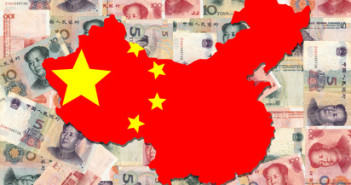China’s manufacturing PMI unexpectedly fell, in the last release for 2010. Will this hurt the powerful Aussie, or be only a temporary bump like last week’s Chinese interest rate hike event?
The purchasing managers’ index for the manufacturing sector disappointed with a drop to 53.9 points, instead of rising from 55.2 to 55.7 points, as expected. This figure was released during the new year weekend, as scheduled, so the market has time to digest this figure.
This figure for December, the last month of 2010, already shows that the Chinese efforts to cool down the economy have some fruits. This comes as inflation might get out of control – it already reached an annual level of 5.1%.
The Chinese authorities raised the interest rate twice – last week and in October, and also raised the reserve ratio requirement from banks six times in recent months. Now it’s beginning to take a toll on the economy. The PMI figure, above, 50 points, means that the Chinese manufacturing, used all over the world, is still growing, but at a slower pace.
The global economy depends on China, the world’s second largest economy, to push forward, as it did during the past two years, when the world was slowing down. This early sign of slowdown could indicate that China already manages to avoid overheating – slow down.
AUD/USD Impact
The Australian dollar is very dependent in Chinese data. We’ve already seen some days when AUD/USD disregarded a bad and important figure Australia, only to rise on a slightly better than expected Chinese figure – manufacturing PMI.
On the other hand, last week’s surprising rate hike in China was met with limited reaction – AUD/USD dropped below parity, but after a few hours it began a very nice rally, that ended in reaching new multi-year highs of 1.0255 and closing at 1.0225, also a new record close.
Not all traders return to the market on Monday, January 3rd, so the full impact will only be felt on January 4th. The Australian dollar unfortunately depends on European news as well – with no bad headlines around the European debt crisis during the week between Christmas and New Years’, risk appetite pushed the Aussie to new highs. As everyone is getting back to business, we might get some bad news from that region as well.
So, I believe that the negative impact will be stronger than last week, but the Aussie still has a good fundamental basis to avoid a collapse.
For the upcoming events in Australia and an updated technical analysis for AUD/USD, check the out the fresh AUD/USD.



